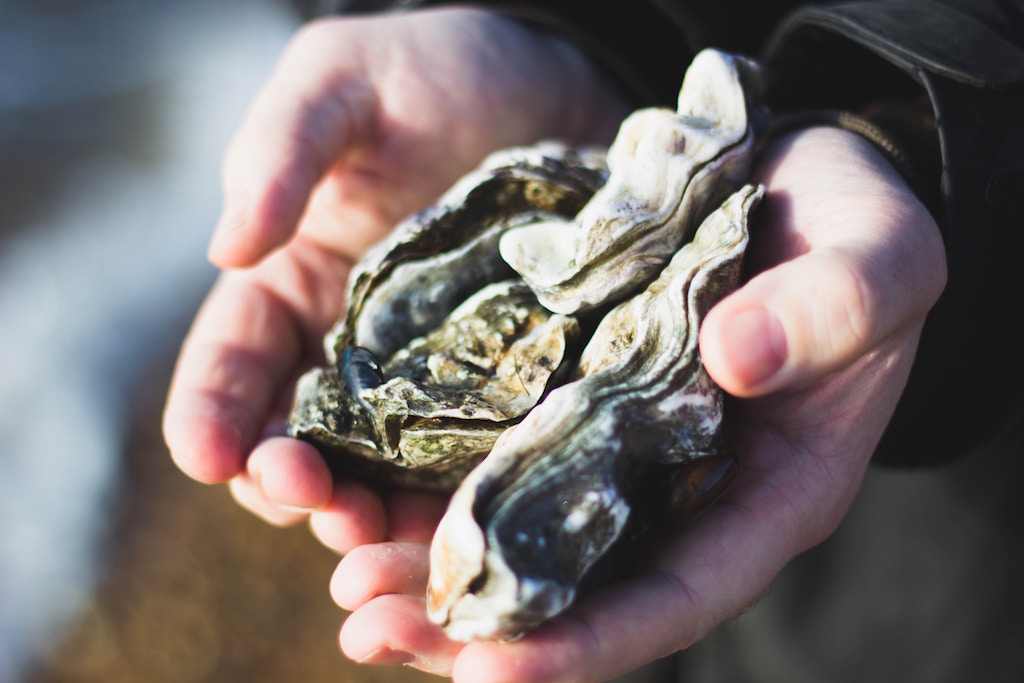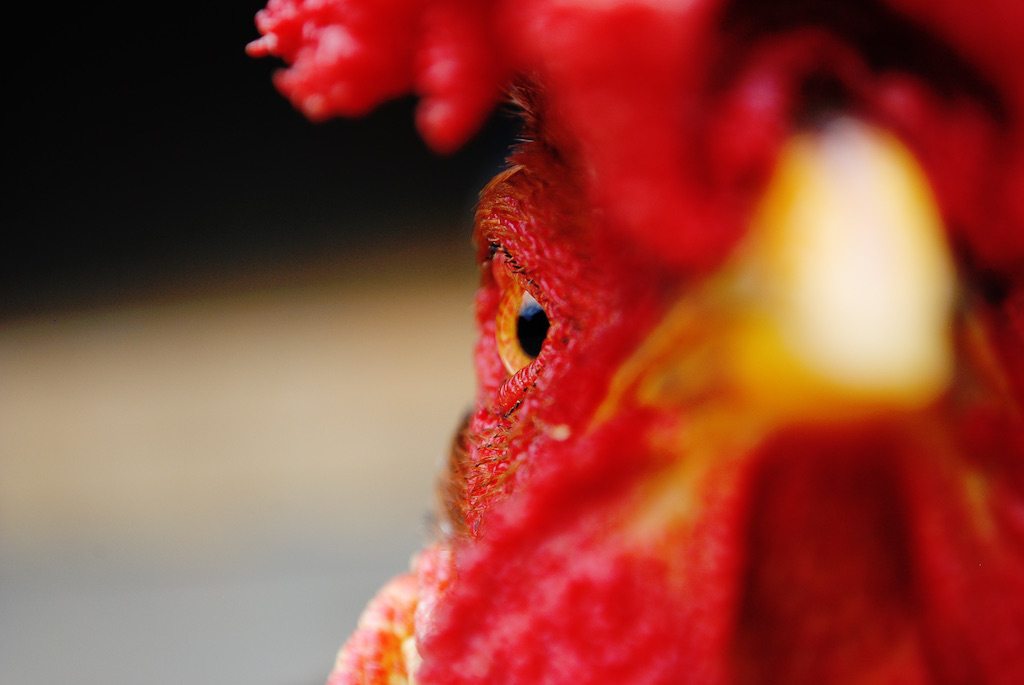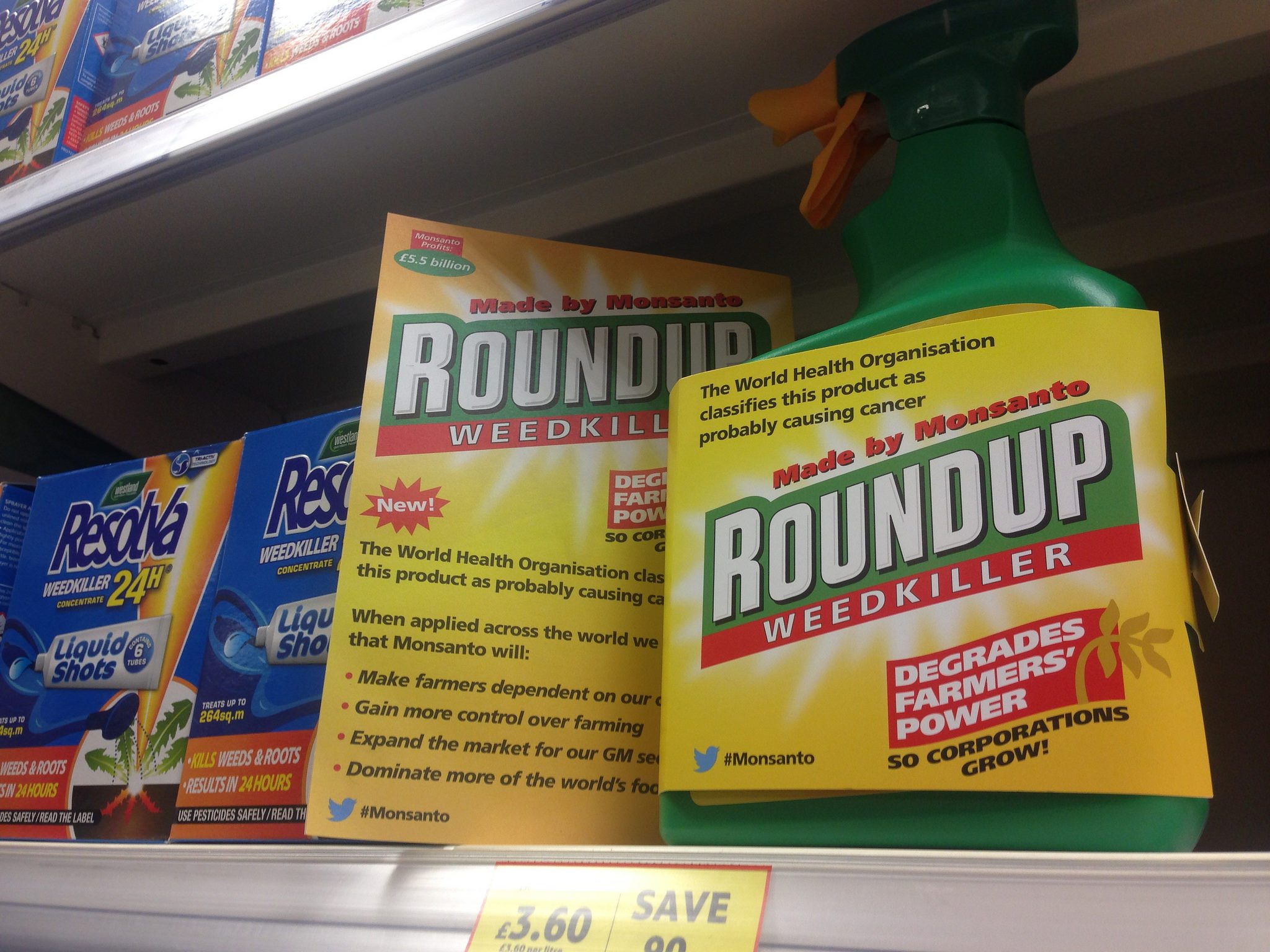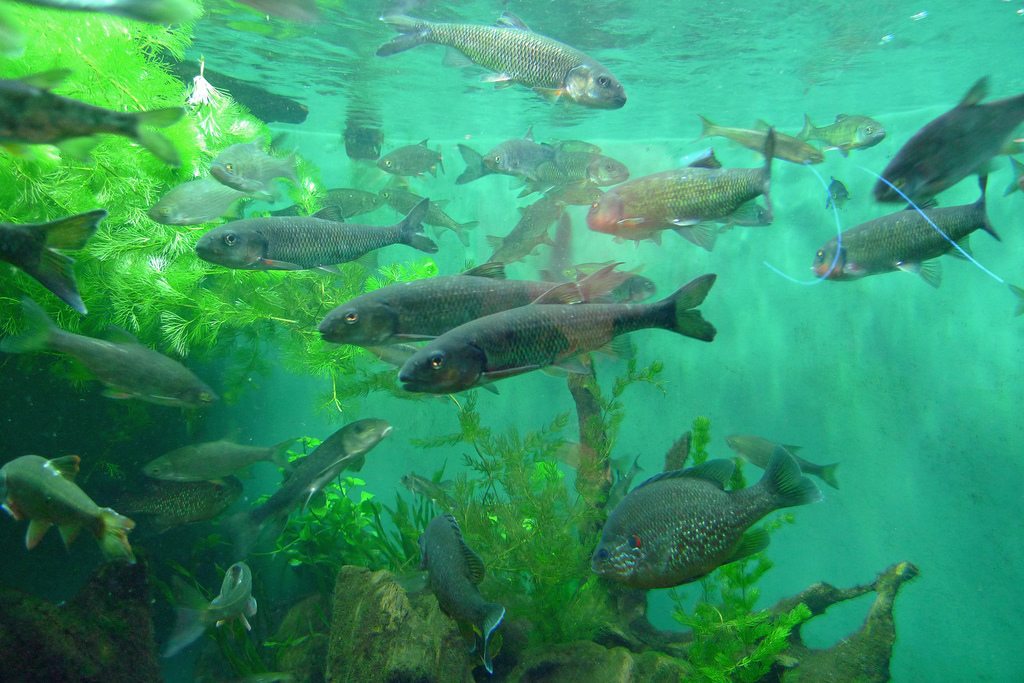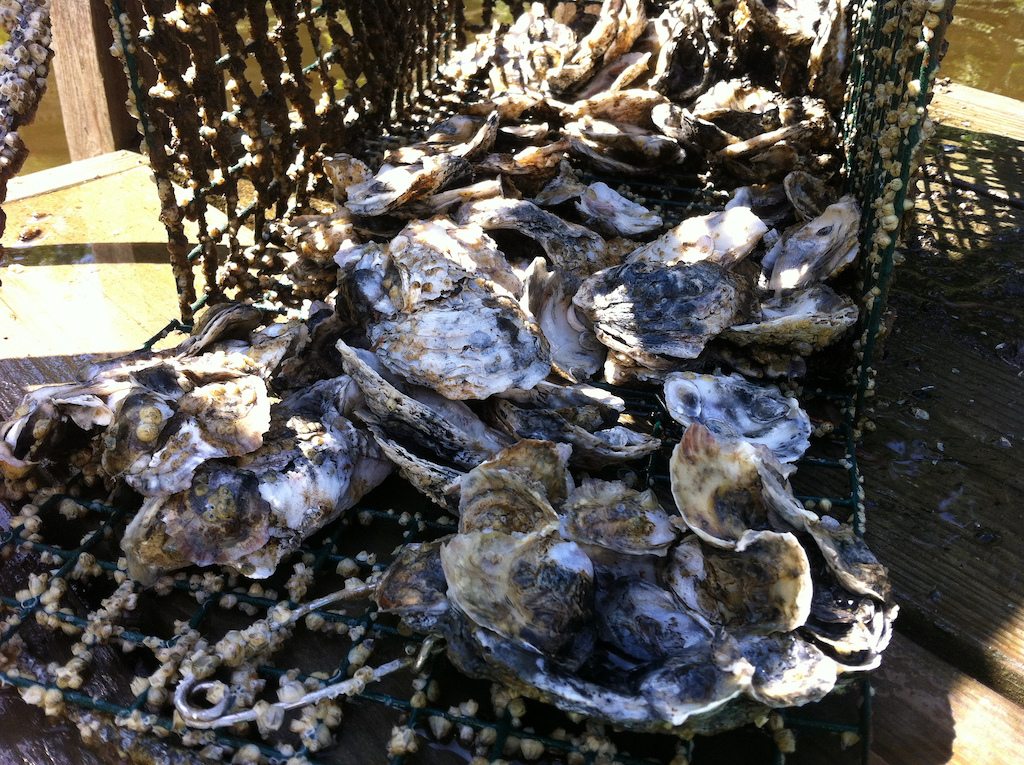A little more than ten years ago, a mysterious epidemic wiped out baby oyster populations. It started in 2006, when Whiskey Creek shellfish hatchery in Oregon lost 80 percent of its cultured larvae. Around the same time, 200 miles north in Washington, Taylor Shellfish saw similarly high mortality rates. And oysters in the wild weren’t faring much better: Oystermen who usually sourced larvae from Washington’s Willapa Bay, one of the largest natural oyster-producing estuaries in the country, weren’t finding enough stock to seed their beds.
Suspecting bacterial infection or a problem with the feed, Whiskey Creek and Taylor Shellfish invested in machines that kill vibrio tubiashii, a bacteria that is a common culprit in oyster larvae die-offs. Survival rates didn’t improve.
But after two years of massive losses and no answers, scientists testing the waters discovered what was really wrong: the ocean water flowing into the hatcheries had changed, and the oysters weren’t able to build their shells. Without shells, they couldn’t survive.
Oyster larvae in normal conditions (left) versus oyster larvae in acidified conditions (right)
Larval oysters experience a crucial phase in their life cycle where they morph from a form not unlike free-floating dust particles into lentil-sized bivalves with the beginnings of a shell. In order to start building that shell, the larvae need to use carbonate ions from their surroundings. But seemingly all of a sudden, the ocean waters flowing into the hatcheries on the Pacific Coast had a lower concentration of carbonate ions than usual, meaning the larvae missed the dust-to-lentil growth phase that turns them into tiny oysters. As a result, most of them died.
But why had the carbonate ions dipped in the first place? Researchers discovered that the underlying cause was more than a couple years of bad luck or a minor disturbance in tidal patterns. In the mid-aughts, a global shift, which had been quietly altering the ocean’s chemistry for hundreds of years, had finally washed up on the shores of the Pacific Coast. And oyster larvae, some of the most vulnerable, valuable, and closely-monitored creatures in the sea, were the first recognized victims of a process that had already started to affect aquatic life across the globe: ocean acidification, a climate change-related process that is gradually lowering pH levels in the water that covers 97 percent of the earth.
The researchers found that it took a human story—a $136 million industry in the United States, employing thousands of people, turned on its head—to get the public and local representatives to pay attention to the problems at hand. Years of scientific papers couldn’t accomplish what the Whiskey Creek story demonstrated in short order: When people’s lives are affected, legislators hear about it. Washington’s then-governor Christine Gregoire soon formed a Blue Ribbon Panel on Ocean Acidification. The panel made policy recommendations, ultimately positioning Washington State as a national leader in ocean acidification research and planning.
Oyster hatcheries raise larvae into seed oysters, pictured above, then sell them to farmers. Once an oyster as reached this size, it can survive in acidified conditions
But despite one state government’s proactive stance on changing seas, ocean acidification-related problems have continued to creep toward other parts of the seafood industry. And now, researchers find themselves racing to grasp the implications of a tangled underwater web that includes global warming, ocean acidification, natural seawater patterns, long-term weather events like El Niño and La Niña, and changing fishery management practices.
Ocean water has a birth place. It begins as melting ice somewhere in the North Atlantic, where the newly-formed cold water sinks to the bottom and floats slowly past the equator. It then falls into a rhythm, flowing along the depths and rising to the surface in a global “conveyor belt” that has carried water on the same path for millennia. It takes ten thousand years for a droplet to make its way to the end of the belt, where it emerges, marked with chemical signposts dating further back than written language, off the coast of Washington and Oregon.
The term “ocean acidification” refers to a change in oceanic pH. Whereas the pH of the ocean used to be 8.2, it’s now hovering around 8.1. And even though that doesn’t sound like a big difference, pH is measured on a logarithmic scale—which means, for those of us who haven’t thought about logs since the SATs, that the ocean is actually about 30 percent more acidic than it used to be. It’s expected to hit pH 7.8 by the end of the century.
Here’s another way to look at it: The ocean is currently acidifying faster than it has in the last 66 million years.
Water moves between the surface and the ocean floor as it advances along the conveyor belt
It helps to think about pH in human terms. A healthy human body typically has a pH of around 7.4, and it fluctuates very little. A change of 0.3 or 0.4—the same amount the ocean is expected to change by the end of the century—can induce a coma. If body pH rises or falls by 0.5 or more, the results are deadly. So while we don’t know exactly what’s happening to the organisms that live in the ocean, we know that their environment is changing more rapidly than ever, at rates that would cause serious problems for the human body.
(It’s important to note that the ocean isn’t actually going to turn to acid by 2100. Shallin Busch, a scientist at NOAA, explains it this way: “The North Pole is a fundamentally cold place, but we say that it’s warming. Not that it’s going to get warm, but that it’s warming. So you can say the same thing about ocean waters: they’re acidifying or becoming more acidic, but they are not acidic themselves.”)
But why did ocean acidification appear in the Pacific Northwest before it showed up in Maine?
The water in the Pacific near Washington is at the end of the conveyor belt, and because it’s so old it contains a lot of carbon dioxide from the natural decomposition of the organisms that have been dying in it for thousands of years. So when the added carbon dioxide from human emissions is mixed with this already-carbon-rich environment during upwelling events, the combination is enough to kill oyster larvae.
The decrease in concentration of carbonate ions—the change that prevented oysters from building their shells—is the most concrete and observable effect of ocean acidification so far
Here’s another way to think about it: If the waters in a hatchery are normally somewhere around pH 8.1, they may dip down to pH 7.8 during annual upwelling events when old, carbon-rich water naturally rises to the surface, as happens every summer. But when that old acidic water is mixed with new acidic water (the latter being the surface waters impacted by human-released carbon dioxide 50 years ago), the combination can nudge the pH down to, say, 7.7. And it’s that small added difference that kills oyster larvae. The human-generated carbon nudges the water across the threshold.
The change in ocean water pH levels likely has a million different effects on marine life, most of which we still know nothing about. The decrease in concentration of carbonate ions—the change that prevented oysters from building their shells—is the most concrete and observable effect of ocean acidification so far. But scientists and fishermen are now trying to tease out all the other, subtler changes. For instance, how a negative impact on one species could affect an entire food chain, or whether or not a change in pH can alter a fish’s ability to make decisions. The predictions are all over the place—remember that Washington Post story about “super crabs” invading the Chesapeake Bay? (Probably not gonna happen.) But research has advanced rapidly in the last few years. Here’s what we know now.
Oysters on the West Coast
But manipulating the incoming water can only work for so long. To escape the West Coast upwelling events, some hatcheries are moving operations as far south as Hawaii.
The oyster industry was the first to be affected by ocean acidification, and it has adapted quickly
Taylor Shellfish—one of the first farms to be impacted by the die-offs—expanded its existing Hawaii hatchery, growing seed oysters and Manila clams. The shellfish are hatched in tropical waters, then shipped northward to mature in places like the Puget Sound.
In 2012, Willapa Bay’s Dave Nisbet followed suit. Unlike Taylor Shellfish, which had always relied on its own hatchery for seed oysters, Nisbet’s company had depended on harvesting wild oyster seed. He took NOAA’s warnings about ocean acidification to heart and decided to build his hatchery in Hawaii, even though it would have been much less expensive to build one in Washington. “I just got nervous,” Nisbet told the Seattle Times in 2012. “I was afraid if I didn’t do something, then our business would just slowly die.”
The oyster industry was the first to be affected by ocean acidification, and it has adapted quickly. In many ways, even though shellfish represent some the most vulnerable populations, they’re also the easiest to fix: The infrastructure to hatch farmed shellfish was in place long before ocean acidification became a concern, and individuals can survive the trip from Hawaii to Seattle. But other species—like Dungeness crabs, which aren’t farmed, and Alaskan salmon, which migrate—don’t have such a simple life cycle.
California’s Dungeness crabs
If larval oysters die-offs were the earliest indicator of the coastal arrival of ocean acidification, then Dungeness crabs are the species researchers and fishermen worry may struggle next. They represent the most valuable fishery on the West Coast, generating $167 million in ex-vessel value in California in 2011. Like oysters, Dungeness crabs are a key driver of the fishing industry, so lucrative that many fishermen rely on them to guarantee an annual income.
Like oysters, Dungeness crabs rely on carbonate to build their shells. But carbonate isn’t the primary molecule they use
Paul McElhany, a researcher at NOAA, has been testing potential impacts of lowered pH levels on Dungeness crabs. In 2016, his Seattle-based team collected egg-laying female crabs and hatched their young in treated water with varying levels of carbon dioxide.
The researchers’ results would concern any fisherman. At an acidified pH level of 7.5, which has already been observed during upwelling events in the Puget Sound, only about a third of the Dungeness crabs survived into the juvenile stage as compared to those that survived in waters with a normal pH. (Remember, the open ocean is at about pH 8.1 now. It’s expected to hit pH 7.8 by the end of the century.)
McElhany says scientists aren’t quite sure why the acidified conditions led to such a big drop in crab survival rates. Like oysters, Dungeness crabs rely on carbonate to build their shells. But carbonate isn’t the primary molecule they use. Which means the lower survival rate was probably caused by something other than what killed the larval oysters, something scientists have not yet identified.
Out in the field, fisherman John Mellor has been keeping an eye on the impossibly complex oceanic patterns that swirl through the crabs’ habitat. And while he doesn’t think he’s witnessed ocean acidification impacting crab populations first hand, he’s seen warming waters directly affect the crab catch.
To be clear, ocean acidification could be impacting Dungeness crab life cycles already. But because they aren’t farmed and because their West Coast habitat has been so abnormal for the last few years—we’ll get to that in a second—it’s impossible to separate ocean acidification from everything else that’s happening along their migration routes.
Unlike shellfish, which can start their lives in Hawaiian hatcheries to avoid being damaged by a bit of bad water, Dungeness crabs only grow in the wild
But there have been recent events that have impacted the Dungeness crab fishery, and they show how a small environmental change (in this case, so small the crabs didn’t even notice) can affect the industry as a whole. It’s these types of indirect impacts—problems that involve organisms far down the food chain, not the crabs themselves—that researchers like McElhany can’t yet predict in a lab. But that doesn’t mean they’re insignificant.
Between 2014 and 2016, a mass of warm water known as “The Blob” was hanging out along the West Coast. It hasn’t been proven that the blob was a direct result of climate change, though Mellor says many people assume it was. Regardless, scientists expect blob-like conditions to become more common as ocean waters continue to warm.
The blob disrupted local environments, causing die-offs of sea lions and fur seals. It also made a certain type of algae really, really happy. That algae, Pseudo-nitzschia australis, produces a toxin called domoic acid. (It has “acid” in its name, but that’s where its relationship to ocean acidification ends.) Humans can’t eat too much domoic acid without getting sick.
Regulators in California don’t let fishermen catch Dungeness crabs if the crabs have eaten too much algae—no one wants to pass domoic acid poisoning off on some unsuspecting diner. But those restrictions are hard on fishermen. A few years back, Mellor’s season was delayed by five months as he waited for the crab tests to come back clean.
“You can’t really go drive for Uber,” he says, adding that he had to be ready to start fishing at any moment.
To recap: The crabs hadn’t gone anywhere. They were healthy and thriving, and they hadn’t moved from their normal stomping grounds. But warmer-than-usual waters meant higher-than-normal levels of algae, and that algae made the crabs poisonous to humans. This is the kind of butterfly effect that will likely impact Dungeness populations long before pH levels drop down to 7.5, and it’s this type of phenomenon scientists are hoping to predict by running computer simulations of entire food webs in acidified conditions.
This year, crab fishing season in Oregon has already been delayed because of domoic acid
Shallin Busch, the scientist at NOAA who studies ocean acidification and fisheries, has been working to predict the effects of ocean-wide change on specific populations. “Basically we created a model of the West Coast food web in the computer and we put in this scenario of ocean acidification from the chemistry change,” she explains. “We looked to see what might happen to fish populations that we harvest under acidification. The take-home answer is that the Dungeness crab harvest was most impacted by our scenarios,” she says. “What this model work was showing was that there’s also likely to be some indirect effect, kind of a food web effect of acidification as well.”
This year, Mellor’s fishing season started on time. Crab fishermen in Oregon weren’t so lucky—their season has already been delayed because of domoic acid.
If oysters show the most direct and observable link between ocean acidification and survival rates, the crabs are a reminder that our knowledge of this phenomenon is far from complete. It’ll take years for the gap between lab-generated conclusions and the natural world to narrow. In the meantime, crab populations will continue to live in a changing habitat.
Elsewhere
Though we have the most data about oysters and Dungeness crabs, researchers are also focusing on the potential impacts of ocean acidification on other commercially-valuable species. McElhany says there’s some preliminary evidence that shows elevated acidity may impact the part of a salmon’s brain that helps it avoid predators—another incidence of a subtle change that could have catastrophic consequences. Earlier this month, biologists began sounding the alarm bells about Alaska’s red king crabs, warning that they could be extinct in the next century. King crabs struggle to build their shells in acidified conditions, and researchers hypothesize that they simply can’t generate enough energy to maintain a survivable internal pH as external pH levels continue to fall.
There’s a little hope, though: In the king crab trials, a few of the juveniles made it out alive in lab conditions that simulated Alaskan waters a hundred years from now. Those crabs may be able to pass their traits onto their young, creating a new generation of crustaceans that can survive in changing waters.
What can we do about the impact of ocean acidification right now? “We don’t have that answer for you,” Busch says. “We’re hoping in the future that we will. There’s this massive global effort to better understand species sensitivity, better understand ecosystem changes, do better monitoring. That’s one thing.”
